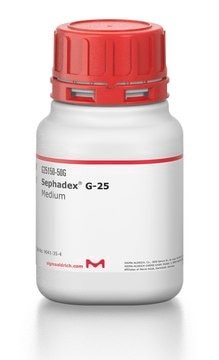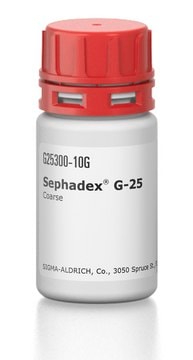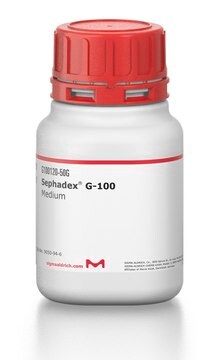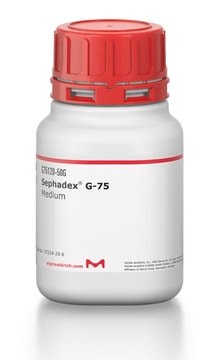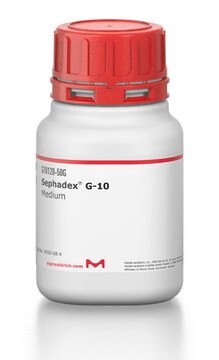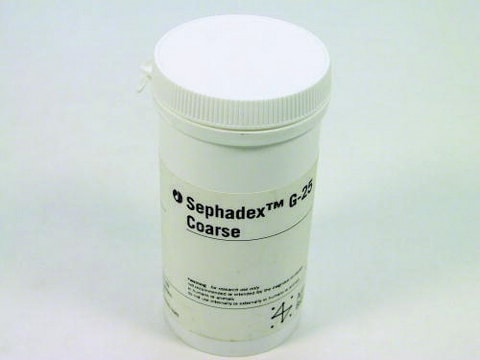S5772
Sephadex® G-25
BioReagent, for molecular biology, DNA grade, Superfine
About This Item
Productos recomendados
grado
DNA grade
for molecular biology
Línea del producto
BioReagent
formulario
beads
técnicas
buffer exchange: suitable
grupo activo de la matriz
phase
diámetro microesfera
20-50 μm
tamaño de poro
exclusion limit (10 bp dsDNA; (rA)10)
intervalo de pH
2-13
aplicaciones
life science and biopharma
compatibilidad
Cytiva
actividad extraña
DNase, RNase, none detected
temp. de almacenamiento
room temp
InChI
1S/C6H12O6.C3H8O3/c7-1-2-3(8)4(9)5(10)6(11)12-2;4-1-3(6)2-5/h2-11H,1H2;3-6H,1-2H2/t2-,3-,4-,5-,6-;/m1./s1
Clave InChI
BCPVZFFJGCURNR-OCOFDJSDSA-N
¿Está buscando productos similares? Visita Guía de comparación de productos
Descripción general
Aplicación
Características y beneficios
- Excellent recovery
- Minimal sample dilution
- Quick and easy to use
Información legal
Producto relacionado
Código de clase de almacenamiento
11 - Combustible Solids
Clase de riesgo para el agua (WGK)
WGK 3
Punto de inflamabilidad (°F)
Not applicable
Punto de inflamabilidad (°C)
Not applicable
Equipo de protección personal
Eyeshields, Gloves, type N95 (US)
Certificados de análisis (COA)
Busque Certificados de análisis (COA) introduciendo el número de lote del producto. Los números de lote se encuentran en la etiqueta del producto después de las palabras «Lot» o «Batch»
¿Ya tiene este producto?
Encuentre la documentación para los productos que ha comprado recientemente en la Biblioteca de documentos.
Los clientes también vieron
Nuestro equipo de científicos tiene experiencia en todas las áreas de investigación: Ciencias de la vida, Ciencia de los materiales, Síntesis química, Cromatografía, Analítica y muchas otras.
Póngase en contacto con el Servicio técnico